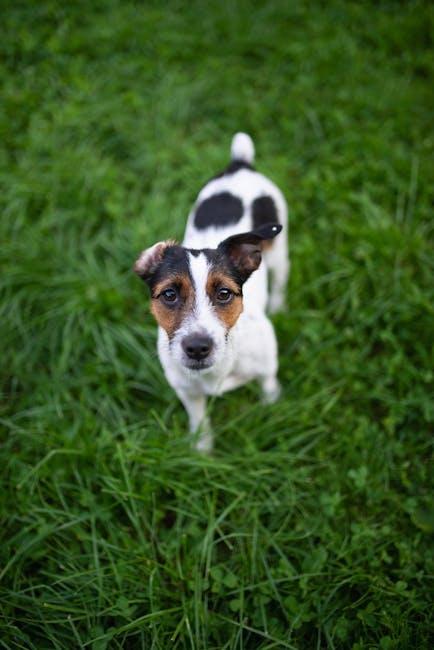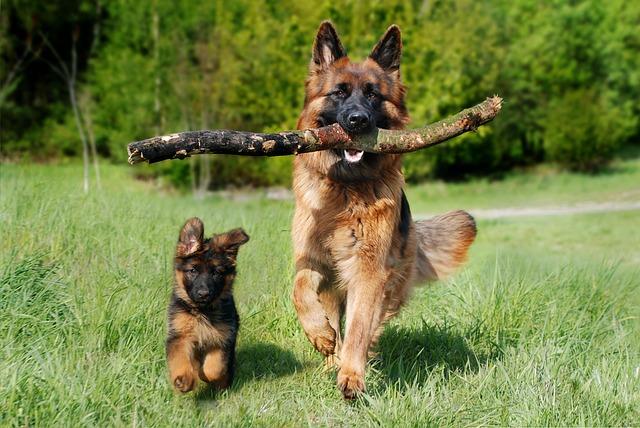Introducing a dog to a new environment can be both an exciting and daunting experience, for both you and your furry friend. Whether you’re moving to a new home, embarking on a travel adventure, or simply exploring new locales, ensuring your dog’s comfort and safety is paramount. Dogs, much like humans, thrive on familiarity and routine, and a sudden change can sometimes lead to anxiety or stress. In this guide, we’ll walk you through practical steps and thoughtful strategies to help your dog adjust smoothly to new surroundings. With a little patience, understanding, and preparation, you can turn these transitions into positive experiences that strengthen your bond and enrich your dog’s life. Let’s explore how to make new environments feel just as welcoming as home.
Choosing the Right Time and Place for Your Dogs New Adventure
When planning a new outing with your canine companion, timing and location are crucial for a smooth experience. Opt for calm and quiet times of the day, such as early morning or late afternoon, when foot traffic is minimal. This helps in reducing stress for both you and your dog, allowing them to explore without feeling overwhelmed. Check local guidelines and weather forecasts to ensure a safe and comfortable adventure.
- Scout locations in advance to identify potential hazards or distractions.
- Choose places with ample space for your dog to roam freely.
- Consider areas that are dog-friendly with amenities like water stations and waste bins.
- Avoid locations with loud noises or heavy machinery that might startle your pet.
By selecting the right time and place, you set the stage for a joyful and enriching experience that both you and your dog will cherish.

Understanding Your Dogs Body Language and Comfort Signals
When venturing into a new environment with your furry friend, understanding their body language can be key to ensuring a smooth transition. Dogs communicate a lot through their posture, facial expressions, and tail movements. Recognizing these signals can help you gauge their comfort level and respond appropriately. Signs of a relaxed and comfortable dog include a wagging tail, loose and wiggly body posture, and a relaxed facial expression with open, soft eyes. On the other hand, signs of stress or discomfort might include a tucked tail, rigid body, pinned-back ears, and yawning or lip licking when not tired or hungry.
- Observe their tail: A tail held high and wagging loosely usually indicates happiness, while a tucked tail suggests fear or anxiety.
- Check their posture: A relaxed body with weight distributed evenly indicates ease, whereas a crouched or tense posture may signal discomfort.
- Notice their facial expressions: Soft, open eyes and a relaxed mouth often mean your dog is at ease, while wide eyes or a tightly closed mouth can indicate stress.
By paying attention to these cues, you can better support your dog as they explore new places, ensuring they feel safe and secure. This understanding not only fosters a stronger bond between you and your pet but also makes every new adventure a positive experience for both of you.

Creating a Positive Experience with Familiar Items and Treats
When embarking on the journey of introducing your dog to a new environment, leveraging the comfort of familiar items and treats can be incredibly beneficial. Dogs, much like humans, find solace in what they know and love. By bringing along your dog’s favorite blanket or toy, you create a tangible connection to their known world. This not only provides them with a sense of security but also offers a soothing reminder of home amidst the unfamiliar surroundings.
Incorporate these strategies for a smoother transition:
- Carry their favorite toy: A cherished toy can serve as a comforting distraction and provide a playful outlet for any nervous energy.
- Pack familiar treats: Using treats they already love can help reinforce positive behaviors in new settings. Consider packing a small bag of their preferred snacks to reward calmness and curiosity.
- Use a familiar blanket: Lay down a blanket they often use at home in the new space to create a comforting rest area.
- Maintain a routine: Try to stick to their regular feeding and walking schedule to provide a sense of normalcy.
Remember, patience and understanding are key. By thoughtfully integrating these familiar elements, you can help your dog build confidence and feel more at ease as they explore new environments.
Gradually Expanding Your Dogs Horizons Safely and Confidently
Introducing your furry friend to new environments can be a rewarding experience for both you and your dog. The key is to ensure these experiences are positive and stress-free. Here are some tips to help you achieve this:
- Start Small: Begin with environments that are similar to what your dog is already comfortable with. Gradually increase the level of novelty and complexity.
- Observe Body Language: Pay close attention to your dog’s signals. Look for signs of anxiety or discomfort, such as excessive panting or yawning, and be ready to intervene if necessary.
- Use Positive Reinforcement: Reward your dog with treats or praise when they display calm behavior in new settings. This will help them associate these environments with positive outcomes.
By taking these steps, you can help your dog feel more at ease as they explore the world around them. Remember, patience and consistency are your best allies in this journey.

